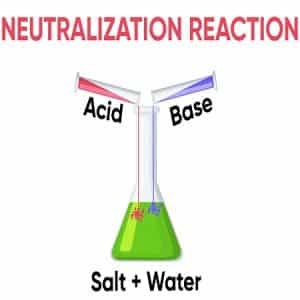Phosphoric acid, also known as orthophosphoric acid, is one of the most widely used mineral acids with the chemical formula H3PO4, which contains one phosphorus atom, four oxygen atoms, and three hydrogen atoms. This compound is one of the most important and useful chemicals known to humans. The raw form of this acid is extracted from phosphate rocks while the purer form of white phosphorus is produced industrially. In general, phosphoric acid is produced in the industry in two main ways: 1) the wet method and 2) the thermal method. In the thermal method, the produced acid has a higher purity and concentration but has very high energy. Phosphoric acid produced in the wet method is less pure and is suitable for the production of various phosphate fertilizers.
Given the uses of phosphoric acid that we discussed in previous articles, we should have a brief overview of the most common neutralizing chemical reactions in which this highly consumed mineral acid participates.
What Is Neutralization?
Neutralization is the removal of an acidic or alkaline property by a suitable chemical agent. For industrial neutralization, different chemicals are available depending on the application and whether you are neutralizing an acidic or alkaline liquid. Acids such as phosphoric acid, due to their purity, always cause problems and hazards for facilities, equipment, and the environment. In order to solve these problems, experts have always been looking for a way to eliminate the acidic properties of these substances, so that they can use acid in their work system and that they can be excreted without any problems.
How Do We Neutralize an Acid?
The most common chemicals used to neutralize acids or bases are sodium hydroxide (50%) and sulfuric acid (98%). Sodium carbonate (soda ash), ammonium hydroxide, calcium hydroxide (lime), or magnesium hydroxide can also be used to raise the pH of an acidic liquid. In addition to sulfuric acid, a base liquid, phosphoric acid, hydrochloric acid (HCl), nitric acid or carbon dioxide can be used to lower the PH. These are all effective chemicals for pH adjustment. Important examples of neutralization and regulation of acidity include industrial neutralization of drinking water and wastewater treatment. It is also used in the food industry to increase the shelf life of foods and improve their taste. In the pharmaceutical industry, this method is used to adjust the pH of drugs in accordance with the acidity of the internal environment of the body and also for better performance of drugs.

How to Neutralize Phosphoric Acid?
Now that we are fully acquainted with the concept of this topic, we will discuss how neutralizing phosphoric acid:
Phosphoric Acid and Sodium Hydroxide:
The chemical reaction between phosphoric acid and sodium hydroxide is a neutralization reaction between a weak acid and a strong base, the product of which is trisodium phosphate and water.
H3PO4+3NaOH⇌Na3PO4+3H2O
Phosphoric Acid and Potassium Hydroxide:
In this neutralization reaction, we have phosphoric acid and potassium hydroxide, which process gives us potassium phosphate salts and water.
H3PO4 + KOH ⇌ K3PO4 + H2O
Phosphoric Acid and Ammonia:
Another neutralization reaction of phosphoric acid is its reaction with ammonia, the product of which is ammonium phosphate.
H3PO4 + 3 NH3 → (NH4)3PO
Ammonium phosphate obtained plays an important role in the production of phosphate fertilizers in agriculture. One of the advantages of producing this fertilizer compared to other phosphorus fertilizers is that it can use less pure phosphoric acid and unlike other fertilizers, pure phosphoric acid is not needed is not.
Conclusion:
In general, any effluent from industries and factories using acids that have a pH outside the neutral range should definitely be neutralized before entering the wastewater cycle. If this is not done, the equipment will definitely corrode and their normal disposal will have a lot of environmental hazards.







2 Responses
Does phosphoric acid need to be neutralized?
Phosphoric acid is dangerous to both health and the environment, so a neutralized sample of this acid should be used. Naturally, acids are neutralized by bases.